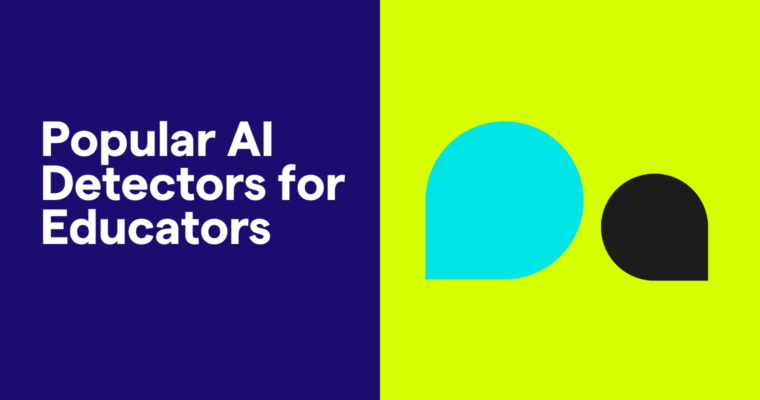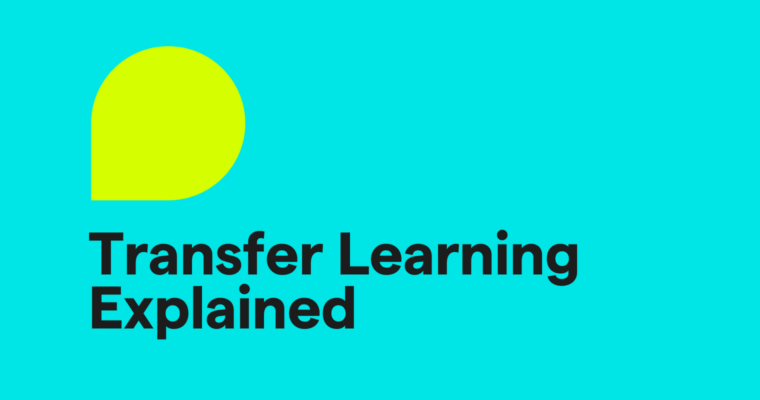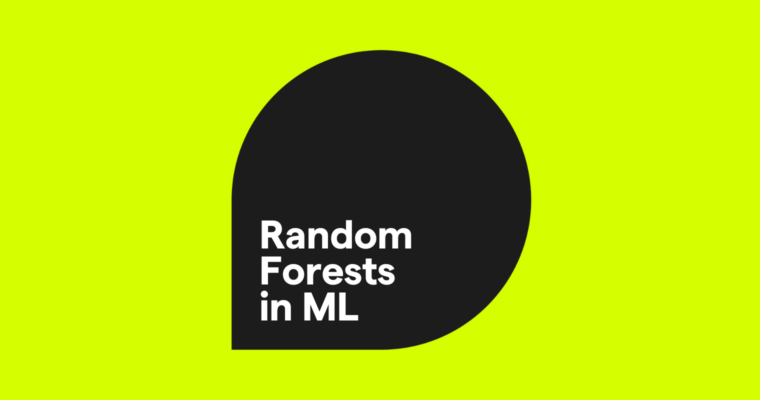
Despite all the recent hype, artificial intelligence (AI) is nothing new. In fact, it predates the World Wide Web by decades. While the sudden and rapid emergence of generative AI has gotten all the attention (and is probably why you’re reading this piece), you’ve surely encountered AI directly and indirectly for many years.
This high-level overview of AI will unpack the various ways it can work, what it can and can’t do, and its implications for the present and future of business and society. We’ll also point out how this relates to Grammarly—it’s been a part of how we’ve helped people write for over a decade.
Table of contents
Artificial intelligence explained
Artificial intelligence is a technology that simulates the way the human mind learns and works.
AI is different from standard computer programs in that it can solve problems using algorithms or logical reasoning. Also, in most applications today, it can learn and adapt without human intervention. Major aspects of the field of AI include machine learning (ML), natural language processing (NLP), and neural networks.
How artificial intelligence works
A model is a specific instance of AI. For instance, ChatGPT 3.5 and ChatGPT 4 are two AI models. To understand the major building blocks of AI, we will focus on different conceptual approaches to creating a model.
Rule-based AI, or expert systems
The more straightforward framework is what’s called rule-based, or expert systems: People write out specific instructions in a form of logic that an algorithm can understand. The typical customer-support phone tree works this way: It’s told to give a certain response to input that matches certain parameters. Google’s foundational PageRank algorithm is another example but much more sophisticated.
Machine learning
Most AI today uses an approach called machine learning. Rather than being given a set of hard-coded instructions, the model learns the rules for itself from a large (or huge) assortment of content—patterns, relationships, and other dynamics. This process is often called training the model. It’s also possible to combine rules and ML, and we’ll discuss the relative advantages of each later on.
There are four primary categories of ML: supervised, unsupervised, semi-supervised, and self-supervised learning.
1 Supervised learning uses annotated or structured data to tell the machine what it needs to learn. This approach relies on labeled datasets, where the desired output is already known, allowing the model to learn the relationship between inputs and outputs.
2 Unsupervised learning doesn’t have explicit instruction, so the machine is left to make sense of what it’s seeing on its own and then make predictions. This type of learning is used to find hidden patterns or intrinsic structures in input data.
3 Semi-supervised learning is a hybrid approach where the model is trained on a small amount of labeled data supplemented by a large amount of unlabeled data. This method leverages the benefits of both supervised and unsupervised learning, improving learning efficiency and accuracy when labeled data is scarce.
4 Self-supervised learning is an approach where the model generates its own labels from the input data. It is particularly useful in scenarios where labeled data is limited or unavailable. The model uses part of the input data to predict other parts, effectively creating its own supervised signals.
The learning doesn’t have to stop with the initial training. With reinforcement learning, the model continually improves based on feedback on the quality of its output. This evaluation can be done by humans, but there are also many techniques and algorithms for automated reinforcement learning.
Once the model has been trained, it’s ready to be used. An input gets run through the model and gives an output, whether it’s an answer to a question, classifying an image, drawing a graphic, or so on. Some AI (especially rule-based models) are deterministic, meaning that a given input will always lead to a certain output. However, most modern models are probabilistic, introducing some degree of randomness, which explains why if you input the exact same question into ChatGPT twice, you’re unlikely to get the same answer.
Neural networks and deep learning
OK, but how does AI actually work? This is where things get very technical very quickly. We’ll focus on the approach behind many of today’s splashy AI innovations, neural networks.
These simplified representations of a brain’s neurons start by making random guesses, compare those guesses with the correct answers, and make small adjustments over and over to continually improve their accuracy.
Neural networks are composed of layers. At “bottom” is the input, the top is the output, and in between are the so-called hidden layers. From bottom to top, the capabilities become increasingly abstract. For instance, in an image recognition system, lower layers might recognize colors or edges, with higher ones perceiving specific objects.
When neural networks have multiple hidden layers, it’s called deep learning. Today’s deep neural networks typically have lots of layers, and there are often sub-layers with specific functions. Improvements in processing power have unlocked an explosion in innovation.
Natural language processing
When computers seek to understand the way humans write and talk, that’s natural language processing. Whereas a basic spell-check simply highlights words that don’t match its dictionary, Grammarly uses NLP to understand your writing and make suggestions that fit the context.
In the past decade or so, NLP has gone through a revolution, which you’ve surely experienced at work in machine translation, text generation, and automatic transcription. Techniques such as increasing attention (how much the model can “keep in mind” at a given time, rather than just processing word-by-word) and pre-trained models (so they don’t have to relearn how human language works from scratch) have made it possible for machines to both understand and sound like humans in many contexts.
Generative AI
Generative AI is a subset of artificial intelligence that can produce new content, such as text, images, music, and even code, based on its training data.
Unlike traditional AI systems, which are tailored for specific tasks or data analysis, generative AI models are capable of generating original outputs that often mimic human-created work. These models—based on deep neural networks—intuit patterns, styles, or logic from extensive data sets. They then leverage this knowledge to create new, unique content that previously did not exist.
The use of generative AI spans various fields, including entertainment, art, literature, and software development. This demonstrates the versatility of AI and its growing capabilities.
To review: AI can be based on rules or ML. Machine Learning can be supervised or unsupervised, and gets better over time with reinforcement learning. Many of today’s AI models are neural networks which use deep learning through many layers. Natural language processing is a shining success story for deep neural networks, and models that create text, images, code, and more are called generative AI.
History of AI
Here, we’ll provide a brief overview of the history of AI. In the interest of brevity and to focus solely on the development timeline, we won’t mention the individuals behind these innovations.
1950s–1980s: GOFAI spring, then winter
The term artificial intelligence was coined in 1956. That same year, the first running AI software program successfully proved various mathematical theorems, one of which was “more elegant” than the proof offered by the original author.
The first neural network was built in 1967, but most AI research around this time was done using symbolic representation and logic to simulate the rational mind. (You may run across the tongue-in-cheek acronym GOFAI, meaning good old-fashioned AI.) However, a combination of unachieved expectations and limited computational power led to the so-called AI winter, where funding and research slowed down in the 1970s and beyond.
In the ’80s, expert systems—the rule-based AI models we learned about earlier—became popular and had a practical impact on many companies. In parallel, researchers returned to neural networks and developed techniques to have them train themselves.
1990s–2000s: Pervasive but underappreciated
With more processing power and larger datasets, in the 1990s, machine learning became practical at an applied scale, and AI achieved many milestones. Outside of the movies, the first widely known success of artificial intelligence was probably when Deep Blue beat Garry Kasparov at chess way back in 1997. Soon after, the first consumer speech-recognition program, Dragon, became available for Windows.
Despite this progress, as recently as the first decade of this century, many researchers and companies were cloaking their AI products and projects in other terms because they still carried a connotation of overhype. The irony is that these very systems, powering everything from spam filters to Roombas, actually brought the practical value of applied AI to everyday life.
2010s–today: AI goes mainstream
In the 2010s, AI began an upswing that continues to this day. Rather than one single breakthrough, a number of factors converged:
- GPUs: Despite their name graphics processing unit, these chips turn out to be very efficient for training deep neural networks. A shift toward using GPUs accelerated both the speed and practical scope of spinning up new models.
- Research advancements: New forms and applications of neural networks led to big leaps in computers’ ability to understand and render text and images.
- Big data: By this point, the internet had been around long enough for its billions of users to generate unfathomable amounts of content for models to learn from.
- Cloud computing: The on-demand platforms from Amazon, Google, Microsoft, and others made it much simpler to obtain the computing power needed to develop AI models.
Innovations that were either newly created or radically overhauled during this time include Google Translate, virtual assistants like Siri, and recommendation engines on services like Netflix and Spotify, not to mention many important but less visible impacts on sectors including healthcare, manufacturing, and even defense.
So why did the frenzy over AI kick up several notches once generative AI came on the scene? The big difference is that models like ChatGPT and DALL-E can interpret and respond to just about any input, rather than being restricted to a certain domain. This means that anyone with an internet connection can interact directly with an AI model without any special training and that AI can be put to specific uses much faster than building a new model from scratch.
The future: AGI and ASI
For all its capabilities, what we see today is known as narrow or weak AI. This means technology that covers a portion but not the full range of human intelligence. A machine that equals our brains’ capabilities would be called strong AI, or artificial general intelligence (AGI). Once AI surpasses human intelligence, that’s known as artificial superintelligence (ASI).
How far are we from AGI? It’s anyone’s guess. Even those deeply involved in the field have wildly misestimated the pace of innovation time and again.
Applications and examples of AI
These are but a few of the many ways AI shows up in real-world applications today.
Helping humans do things better. We think Grammarly is an excellent example here: You have the ideas, the sense of what you’re trying to say, and knowledge of the audience. We suggest ways to make your message clearer and improve the chance that it’s well received. Learn more about how Grammarly uses generative AI to improve communication.
Assisting those with disabilities. Technologies such as speech-to-text and text-to-speech are game changers for people with sensory impairments, such as hearing or vision. They allow them to take in previously inaccessible live and recorded content, so they can engage much more with the richness of the world without relying on someone to act as their eyes or ears.
Autonomous systems. AI can blend perception with prediction to do so many things more efficiently and even safely, from self-driving cars to sprinkler systems that don’t run when it’s about to rain. Waymo, the self-driving car company started by Google, reports about 85 percent fewer injury crashes than if humans had driven the same distance.
Recommendations. AI models analyze user behavior and demographics to make highly educated guesses about things like the next TV show or type of sparkling water you may want to try.
Audiovisual processing. Examples include voice recognition from a virtual assistant, automatic toll collection based on processing pictures of license plates, and filtering out visual and audio noise from a recording or stream.
Edge AI. This puts the power of AI directly into devices in the real world, rather than in a datacenter. These tend to be laser-focused on a specific task for fast and low-energy processing. Examples include Face ID on an iPhone and smart thermostats.
Advantages and benefits of AI
Processing at scale. Imagine if a real person had to evaluate every single credit card transaction for fraud or enter every single number from every tax form mailed to the IRS. AI can judge or classify much faster, and often better, than people.
Pattern detection and prediction. AI is beginning to surpass humans in its ability to detect cancer; in one case, it beat professionals by 13%. It’s also really good at sensing when things have diverged from a recognized pattern, such as detecting faults in databases. This pattern-finding power makes AI particularly useful for predictions, from weather forecasts to stock-market movements.
Novel insights. From the very first model, AI has come up with answers and approaches to all sorts of problems that no human ever did. Modern examples span from shoe design to a new law of physics.
Accelerating medicine. From COVID-19 vaccines to Alzheimer’s detection, AI is helping researchers develop diagnoses and treatments faster.
Vigilance. AI never gets tired. So long as it’s properly engineered, and given enough electricity and processing power, it can continually monitor large volumes of data. This is a major contributor to the lower crash rate of autonomous vehicles.
Disadvantages and limitations of AI
Hallucinations. Generative AI can make stuff up. Because so much of what these models say is plausible, many people don’t think to double-check it. One recent instance of this issue came when Michael Cohen, a former lawyer, sent citations to his own lawyer of legal cases that were entirely fabricated by Google’s generative AI, then known as Bard (now Gemini).
Deepfakes. While hallucinations are accidental, deepfakes are intentional. Malicious actors (or, more innocently, pranksters) can use generative AI to make images, video, audio, or text that appears so close to reality that many people cannot tell the difference.
Competition with human jobs. Many people in roles such as writing and customer service see generative AI as a real threat. Fortune reports thousands of jobs lost to AI, which it explicitly says is “certainly undercounting.”
Trouble knowing why it came to a particular conclusion. With neural networks, you can’t know exactly why or how they give a particular output—it can’t be traced directly back to a certain part of the training corpus, for instance. In highly regulated industries, such as healthcare or finance, some AIs are built partly or entirely with rules-based algorithms that humans can evaluate.
Energy consumption. It’s hard to measure directly, but one study estimates that generating a single image, such as with DALL-E, uses close to the same amount of energy as a smartphone charging cycle, which can add up significantly over time.
Conclusion
AI is both old and very recent. Although the field has existed for nearly 70 years, it’s only in the past decade, and especially in the past few years, that many of us have become keenly aware of its power and potential. Thanks to innovations like neural networks, deep learning, natural language processing, and generative AI, tools that would have sounded like science fiction not too long ago are now readily available and making a big difference in the world. Want to try something hands-on right now? Sign up for Grammarly, and see how AI can work for you.






